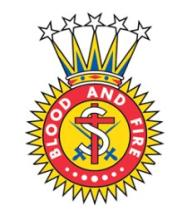The Salvation Army began in China in 1915 and in the 1931 famine, 100,000 people were fed daily.
In 1930, by invitation of the Hong Kong Government, The Salvation Army started its ministry in Hong Kong by providing residential care to underprivileged young girls and women. The Salvation Army provides social services and fulfills the mission of proclaiming the Gospel. In the early days, church gatherings were held in open areas. The first church of The Salvation Army was established in 1937 in Kowloon City.
Affected by the war in the early 1940s, thousands of refugees emerged in the city. The Salvation Army set up a food kitchen to feed the hungry refugees daily. The social environment in Hong Kong became stable in the 1950s. The Salvation Army established schools and provided social services to cope with the increasing welfare demands of the community.
In the following decades, The Salvation Army continued to expand its community services, with schools opened and Churches set up. Recycling Programme and Family Stores also operated to promote green living and recycling for charity. Emergency relief programmes were carried out.
In 2020, The Salvation Army celebrated its 90 years of services in Hong Kong. Over nearly a century, The Salvation Army Hong Kong and Macau Command has grown from a small group ministering to vulnerable women and girls, to a multi-dimensional service organisation giving hope and support to all those in need.
Source: https://salvationarmy.org.hk/about-us/our-history/?lang=en

Comments
Thanks for this, Aldi.The…
Thanks for this, Aldi.
The Salvation Army also played a significant role during the hostilities of December 1941 and the occupation that followed.
As part of the civil defence measures, the Government set up a network of communal kitchens and depots to distribute subsidised or free rice and these were under the overall command of Major C. K. H. Begley, originally from Australia. Major Begley himself ran the distribution centre just off O'Brien Road, and this ended up close to the final front line as the Japanese fought their way towards Central. In spite of this, Major Begley kept the centre open until the Japanese were one block away, and at the time of the surrender (mid-afternoon. on December 25) was planning to relocate so as to carry on the service. Mrs. Begley was a volunteer nurse at La Salle College. Major Begley was assisted by Mrs. Ponting, who I think might also have been in the Salvation Army.
Brigadier Akerholm, a Swedish national, was i/c of another communal kitchen, and narrowly escaped death by gun fire and bombing. She lost all her possessions in a fire, but, remaining uninterned as a neutral, she did her best to carry on relief work during the occupation. Major Dorothy Brazier and Adjutant Doris Lemmon were released from Stanley to run a children's home in Kowloon.
Sources:
Report written by D. L. Newbiggin on the work of Food Control during the hostilities.
SCMP articles on the Salvation Army, September/October 1945.
Salvation Army Food Kitchens c. 1940
Here are a couple we have photos of: